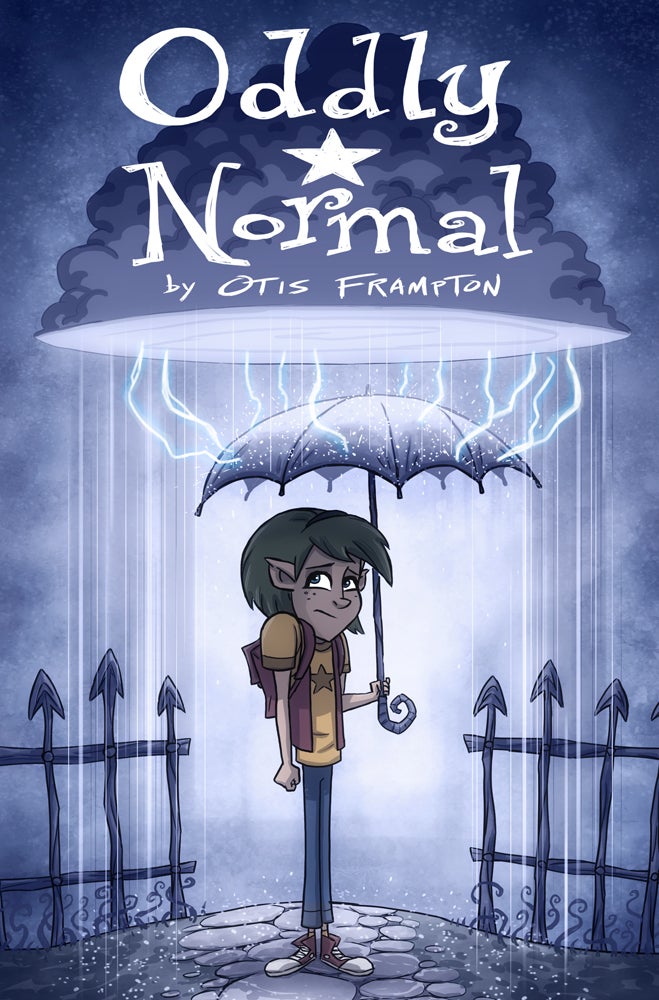
I doubt that I’m the intended audience for Oddly Normal. In fact, I am sure that as a grown man with a healthy social and family life I’m not part of the targeted demographic for a story about an alienated ten-year-old girl. That doesn’t mean I didn’t appreciate Oddly Normal #1 though.
Videos by ComicBook.com
The first issue introduces Oddly Normal, a half-witch girl with perpetually green hair that causes her to be picked on at school. It’s a classic set up involving misunderstood youth, something to which anyone who has gone through adolescence can certainly relate. The way writer and artist Otis Frampton conveys Oddly’s worldview is a highlight of the comic.
The settings and people in Oddly Normal #1 are portrayed in a monochromatic color scheme. Oddly’s school is cast in shades of brown, the bus trip home in purples, and her home itself in grays. The only things to take on any color are those with significance to Oddly. She and her parents are both fully colored, as are some books and toys in her room. Most thing are blended into a shallow, monotonous world reflecting how Oddly views her life. There is a shift in the final two pages of the comic where her surroundings begin to take on a more diverse set of colors denoting the significant change that has occurred. It’s an effective storytelling device that helps create sympathy for Oddly. Frampton credits Thomas Boatwright for flatting the issue, establishing this essential color scheme.
The colors play into the depression and inward focus that comes with being young. Growing up can be an incredibly isolating experience for a variety of reasons. Learning to accept your differences and interact with an often-unkind world is a difficult transition. The art clearly establishes that this story is being told from Oddly’s point of view and conveys those ideas through the look and feel of the comic.
Frampton explores the concepts in the story as well. Oddly’s parents continually question her about non-existent friends. That sequence borders upon being painful to read. Oddly’s own narration can be self-indulgent, but feels honest. It’s clear that Frampton is speaking from his own childhood experiences when writing Oddly. The first issue is something of a slow start though, focusing primarily on the status quo of Oddly’s life and her feelings of rejection. Young readers may find a kindred spirit in these internal narrations, but I was ready to move forward with the story before the end of the issue.
Oddly Normal #1 constructs a premise filled with potential. This is far from the first time a young magic user has been forced to explore a world of witchcraft. However, that potential is largely lacking in this issue. It is focused purely on Oddly and her worldview barely scraping the surface of the creative designs of which Frampton is capable. Frampton recognizes this as a problem and provides a bonus page introducing a variety of panels from future issues. These panels not only promise a more colorful and imaginative world, but one filled with new characters and adventures. It’s a fun piece of back matter and an incentive to follow the comic on a monthly basis.
I’m excited to see Image publishing more comics targeted at a young adult demographic. It’s a woefully underserved area within mainstream comics and one that can be appreciated by “full-sized” adults as well. Oddly Normal isn’t the most engaging debut issue, but it is well told and holds lots of promise. There’s a possibility that with time it could grow into a big hit with a demographic that mainstream comics typically ignore.
Grade: B









